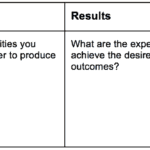5 Ways Nonprofits Can Learn (and Copy) from For-Profits to Scale Up
The private investment world is obsessed with unicorn startups that are valued at billions of dollars. They often scale rapidly to disrupt existing markets or create entirely new ones. Where are the equivalents of unicorns in the nonprofit world? Scale is an oft-repeated word in the sector, but only a few organisations manage to attain it.
Our recent engagements with philanthropic clients led us to ask some fundamental questions about the way the sector operates. Is there something peculiar about the nonprofit world that leads to only a handful of organisations scaling? If so, what can funders do about it?
Nature of industry can determine growth patterns
In the private sector, industries often have very different dynamics leading to very different growth patterns. Some industries such as proprietary pharma require very high upfront investments and many years of gestation before the first returns are realised through relatively high margins. Revenue growth can go from zero for many years to a high figure all of a sudden upon launch.
The growth template here is to “carefully assess risks, hire smart scientists, spend a lot of money and time on research and trials, and then (hopefully) reap rewards.” On the other hand, many internet startups can get a minimal viable product in front of target customers within weeks, and tweak it with minimal investment. Big ticket investments in marketing are needed to ensure that users’ attention is on their product and not elsewhere.
In comparison to the examples above, growth in the nonprofit sector would fall on the tougher end of the spectrum for at least four reasons.
First, nonprofit “firms” tend to take on inherently harder problems (it’s tougher to end polio than to sell soap); many expressly work in areas where there is commercial market failure because they believe an existing unmet need must still be met. Second, they almost always operate in places where institutions and systems are weak, and they aim to fill the gaps. Third, they have a complex set of stakeholders to work with, and often operate amidst regulatory landmines.
Finally, and crucially, nonprofits are often project-based organisations. Operating on a project-to-project basis has high transaction costs; many heads of large nonprofits talk about the pressures of constant fundraising. Projects often require bespoke solutions, not suited to “templatised” implementation.
That’s the environment most nonprofits work in – tough problems in tough places, project-based work with high regulatory risk and ever-changing donor interest. In other words, regardless of what the nonprofit does or what its operating model is, the nature of this industry brings structural constraints that create tougher odds for achieving scale. Therefore, the growth template is to deliver one successful project after another.
How companies and nonprofits scale
In the private sector, growth is funded by reinvesting profits, or by raising external equity or debt. This capital is typically used in establishing systems and processes to support a larger setup when a startup goes from 50 to 100 staff and beyond.
A different breed of talent, often more experienced or specialised than the founders, is hired. Production techniques may be changed to deliver greater volumes. The basic idea is to get the enterprise ready to do what it does at a bigger scale. Obviously, this requires capital to cover costs before revenues eventually catch up.
Nonprofits typically grow by acquiring more projects based on their reputation of having delivered previous projects. In essence, they grow on reputational capital, often of their founder. This reputation is generally built over several years (often without necessary investments in people and systems), which brings a new risk: donor fatigue.
Unlike in the private sector where ‘boring’ companies with stable cashflows are sought by many – think of Warren Buffet’s love for insurance companies – many funders in the nonprofit world tend to move in droves to the next ‘hot innovation.’
Moreover, the three funding routes available for the private sector (reinvested profits, debt, and equity), are typically closed to nonprofits. Most organisations return savings from projects to the donor, or, they hastily rework their programme to accommodate the leftover funds. Thus, many don’t enjoy the luxury of reinvesting unspent grant money into their organisations. In the case of debt to nonprofits, it is nascent even in the United States. And, the nonprofit equivalent of growth equity is also rare – a “general operating grant” that provides unrestricted capital.
Growth and the ability to sustain the larger scale of operations, are almost entirely dependent on donor agenda, which can be fickle or not suited for building organisations. (While there are exceptions—for instance organisations that have significantly diversified their donor base or opted for retail fundraising—these are few and far between.)
what funders can do to break the cycle
The following is not meant to be exhaustive, but a starting point for discussion. A combination of these strategies may be deployed depending on the donor.
Having been on the funding side, I too have squabbled over indirect and staff costs. In fact, many donor organisations have a fixed indirect costs allocation as a percentage of programme costs. But a flat proportional rate makes no sense, except perhaps for administrative efficiency. What often ends up happening is that large grants are over-compensated in indirect costs, and small to medium-sized grants remain underfunded.
Just as there are private sector industries that have a high fixed cost base versus a variable cost base, programmes will also be different. If a nonprofit has built large technology infrastructure to be able to serve its clients, donors must pay for (a portion) of it. If donors pay full costs, organisations will be more likely to build assets that would help them scale.
If you’ve identified a great organisation with a sound operating model that is set for growth, consider funding the organisation, not individual projects. If the operating model has been proven, this investment is actually less risky than project-based funding.
Many funders such as Edna McConnell Clark Foundation, New Profit and Omidyar Network have been providing unrestricted capital to organisations. Ford Foundation too, is increasing the proportion of this kind of unrestricted funding — often referred to as General Operating Grants (GOGs) — in its portfolio.
This is true growth capital: Organisations need to be able to build second-rung leadership and put in place processes and structures for growth. And founders and CEOs must be trusted to grow the nonprofit in the manner they see fit.
In this model, donors need not dictate the projects or geographies the organisation chooses, as long as it broadly still serves the same target market. Much like a venture funded business, this scarcely means that the funder cedes control. A joint plan can be agreed to and the funder can explore taking a board seat. Growth strategies can also be measured and monitored based on mutually defined criteria.
Raising debt may the most appropriate mechanism for organisations across some scenarios. Even in the private sector, debt capital often has a bigger role than equity in growing companies. For instance, a nonprofit may need to purchase a license to a technology that helps it serve clients better. If it has recurring revenues allowing it to pay back debt, then providing debt funding to nonprofits (and social enterprises) can be a powerful lever to help them expand. Varthana in India is an example of a lender to affordable private schools (which are often set up as nonprofit societies and charge a fee for enrollment). In the United States and the UK, community development financial institutions (CDFIs) provide a template.
Funds that offer working capital loans can also prove very beneficial, especially in instances where funding is delayed. For instance, when a nonprofit or social enterprise becomes a government partner, and its services are “purchased” by the government, payments can be invariably delayed. Working capital loans can be the difference between success and failure.
Payroll management, expense management, reporting and HR systems can be costly for small nonprofits. Donors can pool organisations in their portfolio and provide these services to them. In the private sector, investors often arrange favourable pricing for their portfolio companies; venture funds often help their companies find talent. Such support can be as valuable as financial support for a nonprofit that is scaling. It helps them focus on the core problems that they are trying to solve rather than on fixing the plumbing.
“Fund whatever it takes” could be one of the happy by-products of an outcome-focused approach. This is not only pivotal for solving the problem at hand, but is also more likely to set up organisations for scale.
Dhananjay Vaidyanathan Rohini is Managing Partner at Alstonia Impact.
This post was originally published on India Development Review (IDR). It is republished with permission.
Photo courtesy of Justin Luebke.
- Categories
- Uncategorized



